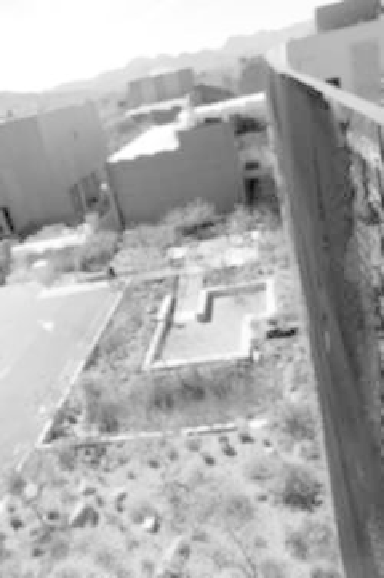Environmental Engineering Reference
In-Depth Information
FIGURE 16.9
The University of Arizona architecture and landscape architecture building's garden is entirely irrigated with
surplus water from HVAC and other infrastructure.
recreates wetlands using water pumped out of farm fields. There are limits to such
trade-offs, but many of them are to be found in desert regions.
• Requiring extractive industry to
pay upfront for impacts
of their business is another
important tactic. Residential and commercial developers are routinely charged
“impact fees,” but it remains rare for extractive industries, whose impact is often
larger and more damaging, to be asked to do so. The 2009 Santa Fe County
Oil and Gas Ordinance makes prepaid infrastructure upgrades (stronger road
paving, new roads, expanded emergency services) a condition of obtaining a
drilling permit.*
• Similarly, it is increasingly common to
require reclamation and revegetation
of
extractive sites. The Ajo mine, for example, if ever reopened, would move old and
new spoil into the old pit area rather than spread it even further across living
landscapes. Antiquated mining laws and industry-sponsored loopholes make
these requirements less effective than they need to be.
• Cities and counties have the legal authority to
limit surface disturbance
as a matter
of public health, safety, and welfare, even where they are prohibited from directly
addressing mineral rights. Santa Fe County's ordinance does this in two ways.
First, overlay analysis (GIS mapping of existing conditions, like studies originally
*
Santa Fe County's ordinances, including its oil and gas development regulations, are online at: http://www.
santafecounty.org/ (accessed August 12, 2011).


Search WWH ::

Custom Search